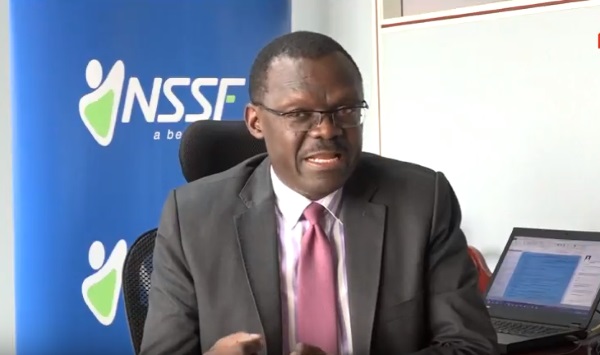The survey conducted worldwide by KM benchmarking was to determine the competitiveness of pension and Social Security Funds on a global scale based on international standards. According to the NSSF Deputy Managing Director Patrick Ayota, the International Social Security Report challenged NSSF to compare its performance on an international scale against other pension funds. The 310 Social Security Funds were assessed based on their return on investment, net value added and the investment cost with asset size ranging from 2 – 7 trillion shillings. “When you compared our total return which basically what, once you’ve taken out certain things we are at 11.8% and yet the global average is 7.6% that’s a number you cannot obtain just in terms of authenticity or the credibility of it because those who are doing it are doing it independent of everything just using the numbers they have.” Said the Deputy Managing Director NSSF.
The NSSF took on several projects worth billions of shillings including estates and commercial buildings despite the economy not growing as fast as expected. “And I think in a lot of ways even if you didn’t do Kagata and looked at Uganda as an economy, Uganda as an economy last year the GDP growth rate was 4.9% but the Fund grew by 20%, in this real economy they grow faster than the economy which tells you the way we invest, based on a strategic allocation actually is getting value for our members.”
Ayota explained that however the Fund did not grow just because the economy grew. “When you look at our set base we grew by 20% which is much higher than the economy grew so it cannot grow just because the economy grew. We must have done other things that enabled us grow and one of the things we do is strategic asset allocation. How do we mix and match our real estate against our investment in shares and equity against hanging investments in bonds and fixed income. That formula you use gives you the overall return you get on an investment.”
The NSSF grew over the years recording 6.6 trillion shillings in June 2016 and 7.9 trillion shillings by this time of the year. “The growth came from two areas; we grew by collecting from our members, we collected 912 billion shillings. The year before we had collected about 700 billion shillings so we had about 200 billion shillings more that we grew by. Now that tells you that Ugandans are beginning to have more confidence in the Fund because they are willing to entrust it with more of their savings.”

